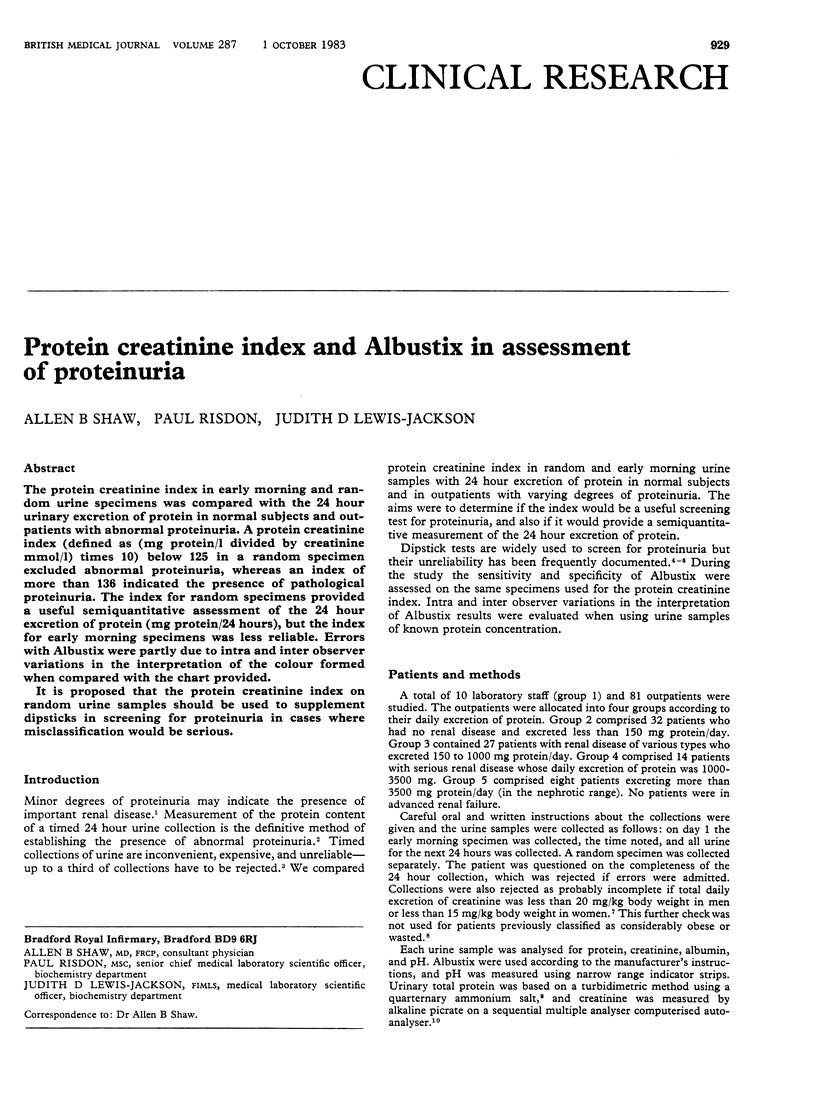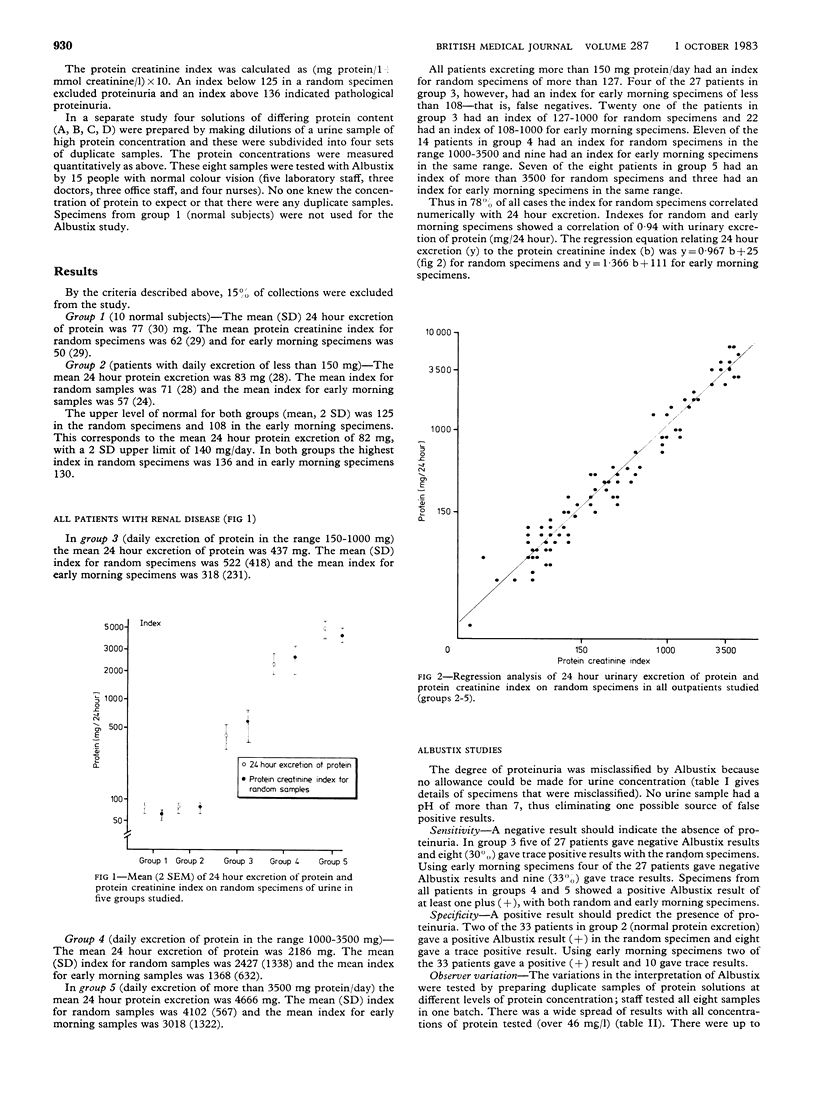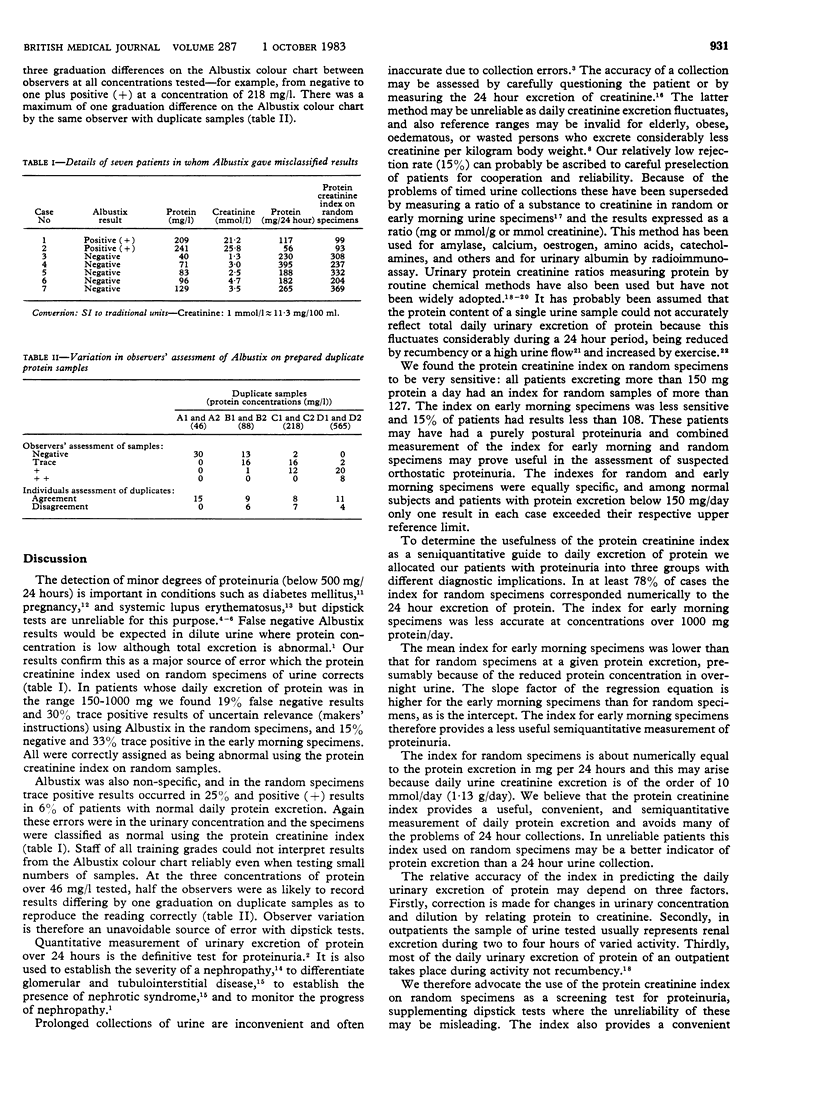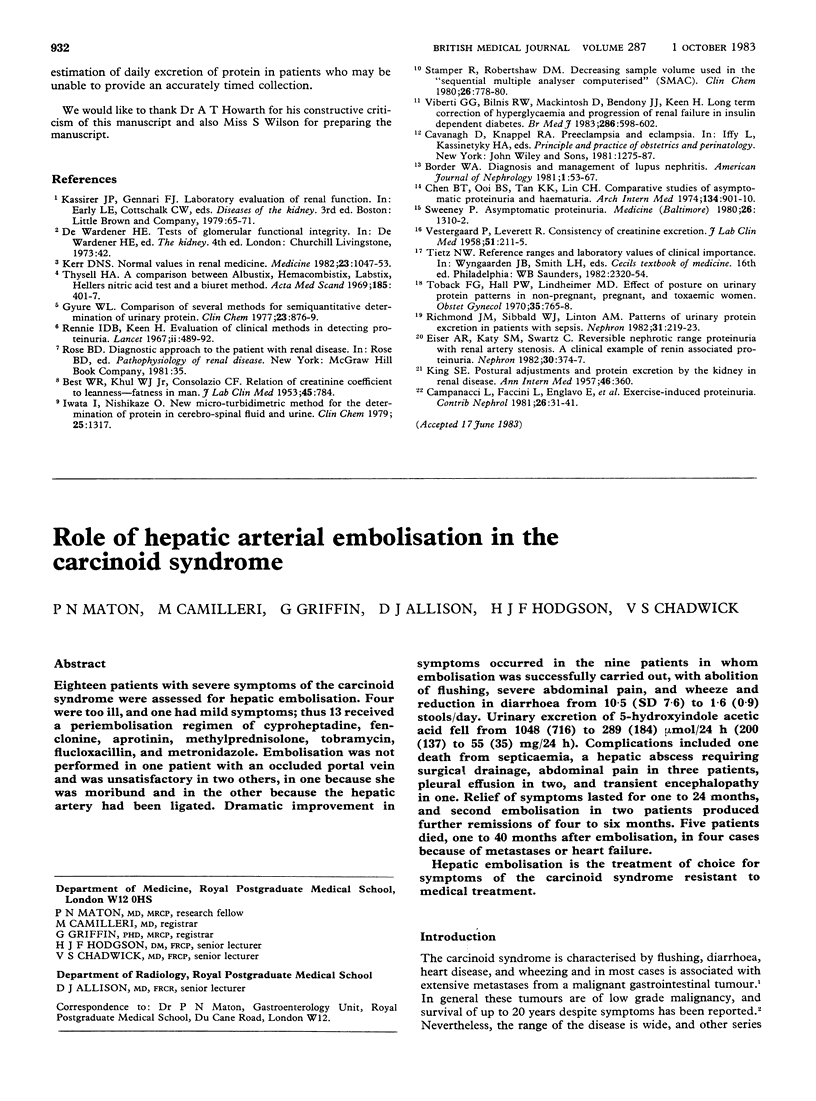Abstract
The protein creatinine index in early morning and random urine specimens was compared with the 24 hour urinary excretion of protein in normal subjects and outpatients with abnormal proteinuria. A protein creatinine index (defined as (mg protein/1 divided by creatinine mmol/1) times 10) below 125 in a random specimen excluded abnormal proteinuria, whereas an index of more than 136 indicated the presence of pathological proteinuria. The index for random specimens provided a useful semiquantitative assessment of the 24 hour excretion of protein (mg protein/24 hours), but the index for early morning specimens was less reliable. Errors with Albustix were partly due to intra and inter observer variations in the interpretation of the colour formed when compared with the chart provided. It is proposed that the protein creatinine index on random urine samples should be used to supplement dipsticks in screening for proteinuria in cases where misclassification would be serious.
Full text
PDF



Selected References
These references are in PubMed. This may not be the complete list of references from this article.
- Campanacci L., Faccini L., Englaro E., Rustia R., Guarnieri G. F., Barat R., Carraro M., De Zotti R., Micheli W. Exercise-induced proteinuria. Contrib Nephrol. 1981;26:31–41. doi: 10.1159/000396102. [DOI] [PubMed] [Google Scholar]
- Chen B. T., Ooi B. S., Tan K. K., Lim C. H. Comparative studies of asymptomatic proteinuria and hematuria. Arch Intern Med. 1974 Nov;134(5):901–905. [PubMed] [Google Scholar]
- Eiser A. R., Katz S. M., Swartz C. Reversible nephrotic range proteinuria with renal artery stenosis: a clinical example of renin-associated proteinuria. Nephron. 1982;30(4):374–377. doi: 10.1159/000182521. [DOI] [PubMed] [Google Scholar]
- Gyure W. L. Comparison of several methods for semiquantitative determination of urinary protein. Clin Chem. 1977 May;23(5):876–879. [PubMed] [Google Scholar]
- Iwata J., Nishikaze O. New micro-turbidimetric method for determination of protein in cerebrospinal fluid and urine. Clin Chem. 1979 Jul;25(7):1317–1319. [PubMed] [Google Scholar]
- KING S. E. Postural adjustments and protein excretion by the kidney in renal disease. Ann Intern Med. 1957 Feb;46(2):360–377. doi: 10.7326/0003-4819-46-2-360. [DOI] [PubMed] [Google Scholar]
- Rennie I. D., Keen H. Evaluation of clinical methods for detecting proteinuria. Lancet. 1967 Sep 2;2(7514):489–492. doi: 10.1016/s0140-6736(67)91656-x. [DOI] [PubMed] [Google Scholar]
- Richmond J. M., Sibbald W. J., Linton A. M., Linton A. L. Patterns of urinary protein excretion in patients with sepsis. Nephron. 1982;31(3):219–223. doi: 10.1159/000182650. [DOI] [PubMed] [Google Scholar]
- Stamper R., Robertshaw D. M. Decreasing sample volume used in the "Sequential Multichannel Analyzer Computerized" (SMAC). Clin Chem. 1980 May;26(6):778–780. [PubMed] [Google Scholar]
- Thysell H. A comparison between Albustix, Hema-Combistix, Labstix, the sulphosalicyclic-acid test, Heller's nitric-acid test, and a biuret method. Diagnosis of proteinuria. Acta Med Scand. 1969 May;185(5):401–407. [PubMed] [Google Scholar]
- Toback F. G., Hall P. W., 3rd, Lindheimer M. D. Effect of posture on urinary protein patterns in nonpregmant, pregnant, and toxemic women. Obstet Gynecol. 1970 May;35(5):765–768. [PubMed] [Google Scholar]
- VESTERGAARD P., LEVERETT R. Constancy of urinary creatinine excretion. J Lab Clin Med. 1958 Feb;51(2):211–218. [PubMed] [Google Scholar]
- Viberti G. C., Bilous R. W., Mackintosh D., Bending J. J., Keen H. Long term correction of hyperglycaemia and progression of renal failure in insulin dependent diabetes. Br Med J (Clin Res Ed) 1983 Feb 19;286(6365):598–602. doi: 10.1136/bmj.286.6365.598. [DOI] [PMC free article] [PubMed] [Google Scholar]


